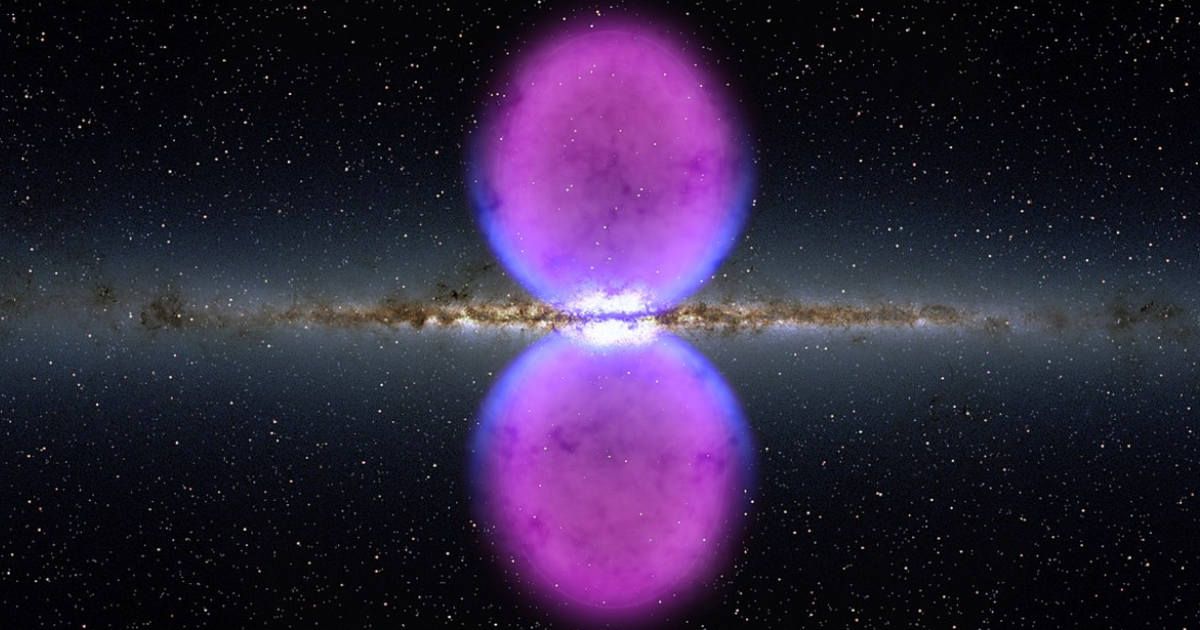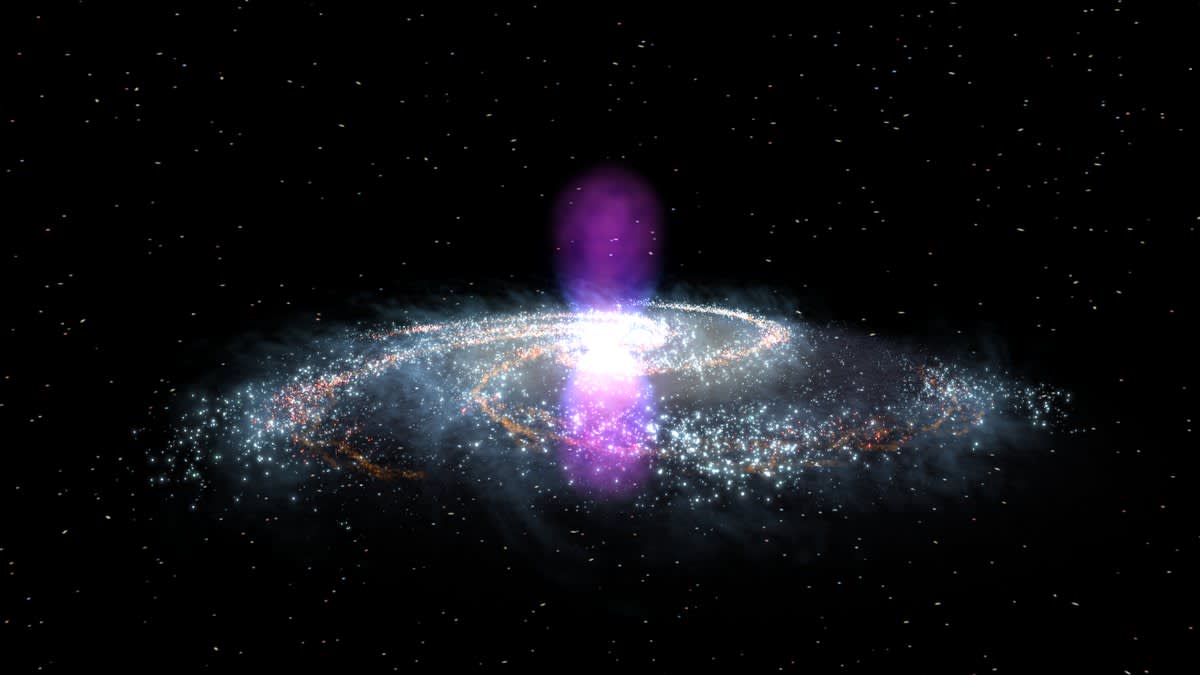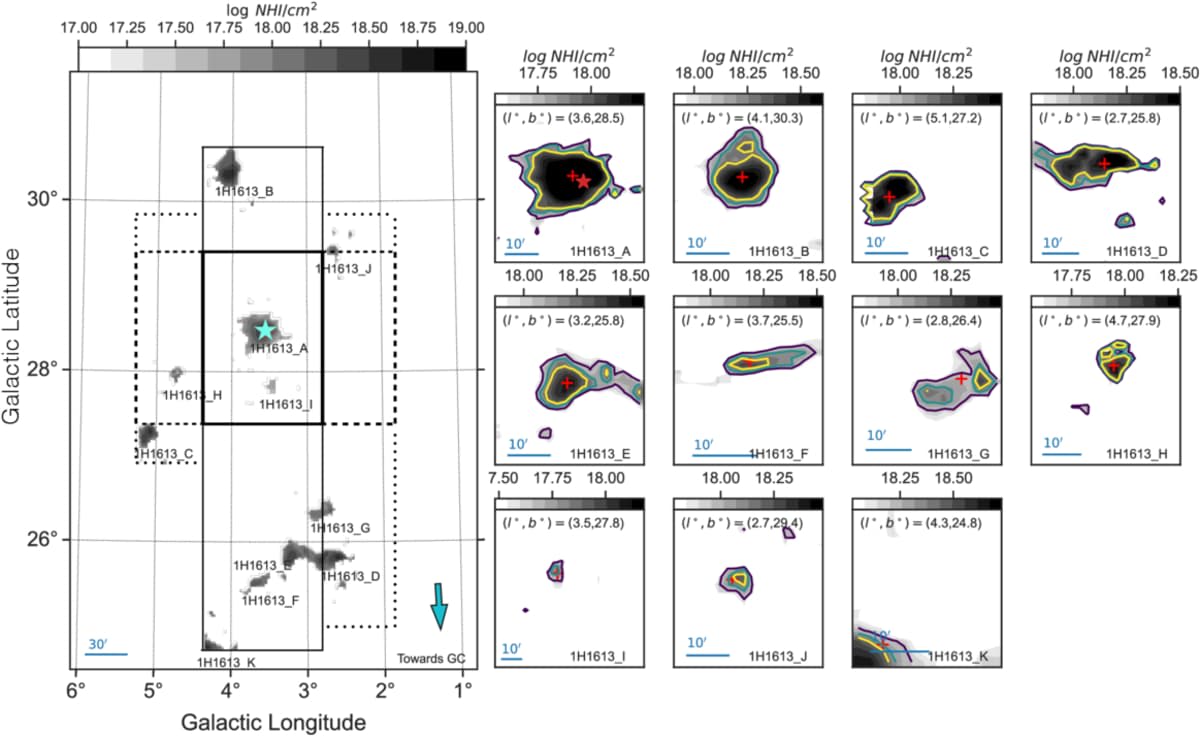'Ice Cube' Clouds Inside Fermi Bubbles Could Reveal When Our Galaxy's Black Hole Last Exploded: Study

Fermi Bubbles have become more bewildering to astronomers. Recently, scientists announced the presence of two massive clouds inside these structures using the Green Bank Telescope. This discovery, if true, transforms their understanding of this phenomenon. These clouds have been explained in detail within a study published in The Astrophysical Journal Letters. These clouds are supposedly composed of cold hydrogen gas and are essentially the remnants of large structures that fizzled out of the Milky Way Galaxy's center some million years ago. Rongmon Bordoloi, an associate professor in the Department of Physics at North Carolina State University, compared the clouds to a large ice cube that is currently being eroded by galactic wind.

Mysterious Bubbles
The Fermi Bubbles are a pair of structures, situated above and below the center of the Milky Way Galaxy, according to Live Science. These twin spheres, composed of superheated plasma, extend around 50,000 light-years from top to bottom. It was uncovered back in 2010 using NASA's Fermi Gamma-ray Space Telescope. Experts deemed the structures to be almost half the size of the Milky Way Galaxy. Initial examinations spotted the structures in gamma-ray readings and found that it was either sharing or very near to another pair of superheated plasma spheres called the eROSITA bubbles. The Fermi Bubbles were formed due to a violent outburst from the Milky Way's central black hole.

Experts believe the explosion released matter above and below the galactic plane at the same time. These jets collected more matter from the nearby area and reached even farther into space. Study authors claim that these newly discovered clouds are possibly the remnants of this released matter. The clouds were spotted by the Green Bank Telescope and appear to be around 13 to 91 light-years in size, making them larger than our solar system.
Why are These Clouds Shocking?
Most of the gas inside the Fermi bubbles is around one million degrees Kelvin in temperature, according to SciTech. The clouds are cooler by at least a factor of 100, exhibiting a temperature of 10,000 degrees Kelvin. This discovery is surprising because, as per past investigations, the hot gas should have destroyed the cold clouds in possibly just a few million years. Since the clouds are still present with steady erosion, that means the Fermi Bubbles' lifespan is not more than a few million years. Many experts believed the bubbles to be a far older phenomenon, which clearly is not the case, as per this finding. The discovery of clouds aligns with readings taken by the Hubble Space Telescope (HST), which implies that cold gas is evaporating in the region, which is what the clouds essentially are.
The assertion that the Fermi Bubbles are a recent development is also confirmed by the estimated speed of gas in the phenomenon. "These gases are moving around a million miles per hour, which also marks the Fermi bubbles as a recent development," Bordoloi explained. "These clouds weren't here when dinosaurs roamed Earth. In cosmic time scales, a million years is the blink of an eye."
There are two expanding bubbles connected to the core of the Milky Way, powered entirely by gamma rays!
— B.O.B (@bestofbesy) August 3, 2024
Two spheres...
Literally "bursting" from the galaxy, these objects, known as "Fermi bubbles," extend up to a total length of about 50,000 light-years. pic.twitter.com/dleMLH8I4V
Implications for the Black Hole
Fermi bubbles, a recent development, also suggest that violent eruptions occurred inside the Milky Way Galaxy's central black hole fairly recently, as stated by Live Science. Bordoloi believes the eruption possibly happened just a few million years ago. It is way recent, which is what other insights suggested. It also implies that the likelihood of such an eruption is more than what was believed, and that the Milky Way's center is not as dormant as past data showed.